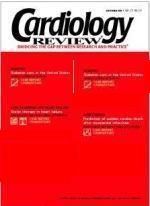Publication
Article
Cardiology Review® Online
Improving the model of diabetes care
Over the past decade, landmark clinical trials have established the value of a multifaceted approach to the care of patients with type 2 diabetes mellitus.1-3 Guidelines have been emerging, which include keeping blood pressure below 130/80 mm Hg, glycosylated hemoglobin below 7%, and low-density lipoprotein cholesterol below 100 mg/dL. In a recent 7-year study in Finland, cardiovascular events were reduced by approximately 50% when patients received the appropriate medications and were counseled in smoking cessation, exercise, and dietary changes.4
The Diabetes Prevention Program (DPP) studied reductions in the incidence of type 2 diabetes in those with impaired glucose tolerance.5 Diet and exercise reduced the incidence of diabetes by almost 60%, much more than was achieved with metformin treatment.
Grant and colleagues (page 17) studied diabetes care in primary care physician practices. They noted that the number of medications needed has increased to at least five, and patients also require time for diet and exercise counseling at each visit. Despite the increased complexity of diabetes care, time with patients increased by only 2 minutes per visit. As shown in the case study, primary care physicians are often slow to change medications and postpone decisions on medication adjustments until the next visit. In the case study, metformin treatment should have been discontinued because the patient’s serum creatinine was over 1.3 mg/dL. Furthermore, there is often a discrepancy between the medications that are prescribed for a patient and the medications that are actually taken.
The current model of diabetes care focuses on the primary care physician. With the increasing complexity of diabetes care, the number of interventions required by the primary care physician is becoming overwhelming. Clearly, the primary care physician needs help. How do we begin to fix our model of diabetes care? Here are some steps that may be taken to improve it:
Flow sheets. In the office, flow sheets are an essential tool for organizing procedures to reflect the established guidelines of care. Flow sheets may be used to track laboratory values, current medications, and foot and eye examinations. Flow sheets give the physician a quick overview of patient progress and goals to be achieved.
Diabetes education. Referrals for diabetes education need to be made soon after the patient presents with type 2 diabetes. Insurance plans are increasingly recognizing the importance of education and are approving both classes and individual instruction by diabetes educators. Repetition is often necessary for behavior to change. Valuable follow-ups may be provided by nurse extender calls to review medications and health habits and identify problems that interfere with good diabetes care. Many insurance com-panies already provide this service.
A further enhancement of the reinforcement process might be video conferencing with an educator individually or in groups, in a provider’s office or even in a patient’s home.
Specialists. It is important to refer patients to specialists early in the treatment of type 2 diabetes to maximize treatment options.
